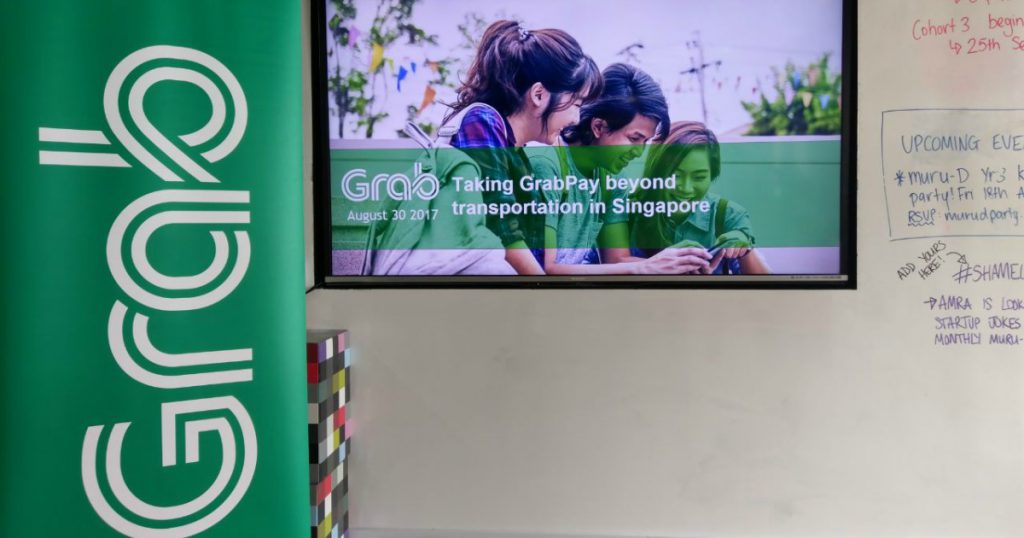Grab wants to become more than a ride-hailing company, and they’ve already begun.
Grab Rewards bolstered its presence amongst merchants and the recent GrabNow strengthened their relationship with financial institutions with the Cash Out option for taxi drivers.
All small steps but all these point towards one core goal – Grab wants to become a player in the future of cashless.
And they’ve just rolled out a new update in that direction.
P2P GrabPay
GrabPay now allows for peer-to-peer credit transfers, and all you need is a mobile number or QR.
iOS users can start from today, and Android users will enjoy it from September 4. For this trial, users can transfer money for allowance, split meal or entertainment costs as well as send credits as ‘gifts’ for special occasions.
To send money to someone close to you, scan the recipient’s QR code to connect. To transfer money remotely, you’d need the recipient’s mobile number.

For extra security, GrabPay now also has a new 6-digit PIN as a 2FA, only required if users have over $150 and more in their wallet or if the app detects unusual activity, such as the app being used in different country.
And by Q4 of 2017, the company intends to partner with over 1000 merchants from cash-dependent industries. Their target? Hawker stalls and small retail brands.
How they intend to do this remains unseen, but Head of GrabPay Jason Thomson is confident in a healthy adoption rate.
Merchants will be able to enjoy lower costs of adoption compared to other cashless payment systems, access to Grab’s user base as well as free marketing exposure & customer loyalty with rewards via GrabRewards.
Add GrabPay’s easy to use interface for merchants (QR code) and zero prerequisite to rent a payment terminal, the barriers to entry to Grab’s payment system becomes a whole lot lower.

“Every day, over 75% of Grab users in Singapore go cashless and use GrabPay […],” began Thompson. “Fund transfer is the first step to expand the use of GrabPay as a mobile wallet.”
“Today, users can transfer money to one another, [later] they can look forward to using GrabPay to buy food or other goods and services”.
Aggregating Cashless
The first target to go cashless are the merchants, says Thompson. By building loyalty and stickiness through rewards with merchants, this can also drive adoption amongst consumers.
“Cash is really expensive [so] we need to create value with every ride. A Grab $1 is worth more than $1 cash, because of the rewards.”
In Singapore we do have e-payments, but too many schemes & systems – inconvenient for consumers and costly for businesses. #ndrsg pic.twitter.com/GRXwWJIkeW
— leehsienloong (@leehsienloong) August 20, 2017
One reason why cashless payments in Singapore is so fragmented is because consumers are adopting multiple systems without any usage model.
Grab is just the opposite, people are already using it. “We’re just allowing them to use it more.”
In terms of reconciling all the existing systems, Thompson says they are not at that stage yet, but they’re “already working intensively with financial institutions, as seen with GrabNow’s 1 day Cash Out.”
Grab For The Future
Grab CEO Anthony Tan once described the potential for a Southeast Asia mobile payments platform as “limitless“.
Today, Thompson mirrored this with the claim that they want “GrabPay everywhere. And I do mean everywhere.”
At the moment, GrabPay is still in its early stages for cashless outside of ride payments, but they are well on track to aggregating cashless systems in Singapore. 75% of Singaporeans on Grab use GrabPay, compared to 6 out of 10 Singaporeans using cashless in general.
“But this does not mean that we are diverting away from our transport services, GrabPay is an extension of Grab.”
“It’s about the growth of the organisation than a dilution of focus.”
Featured Image Credit: Samantha Tay / Vulcan Post










